While most lakes are beautiful, life-giving bodies of water, some can be named far from what their physical appearances hold. There are lakes located in different parts of the world, and you may think that people may never run out of beautiful names to call each lake, but in reality, there are plenty of lakes in the world that have weird and funny names. Lake Disappointment in Australia, for instance, is a stunning saline lake, despite what its name suggests. You might be surprised that the world holds numerous funny-named lakes, but most of them can be found in the Americas, specifically in the United States. This article will list down 10 of the country’s funniest and most bizarre lake names.
Discover the Funniest and Most Bizarre Lake Names in the U.S.
1. Lake Erie
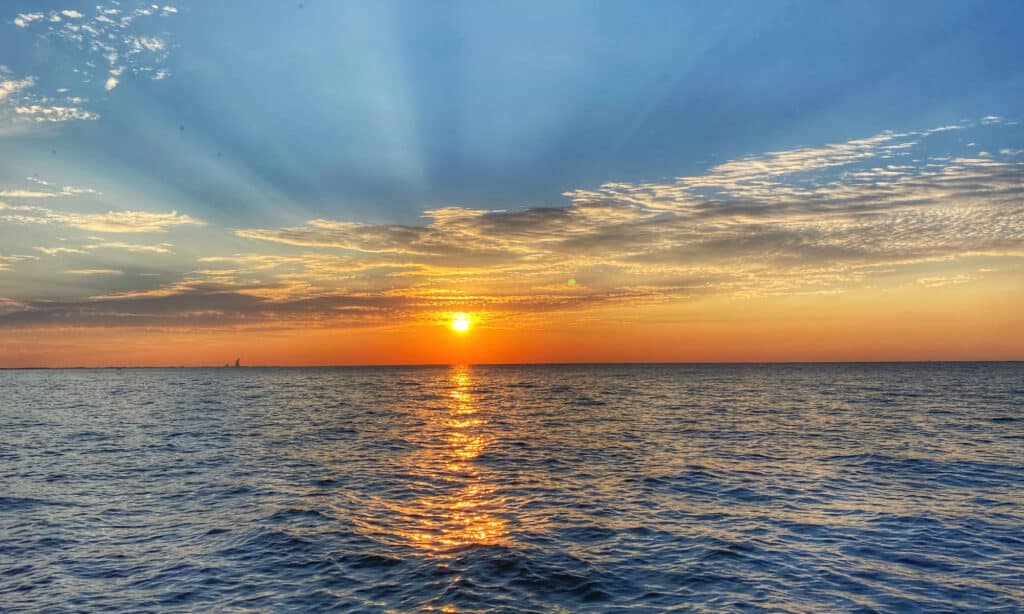
Covering a total area of 9,910 square miles, Lake Erie is the fourth-largest Great Lake.
©iStock.com/becky johnson
Lake Erie is the fourth largest of the Great Lakes, stretching from the Canadian province of Ontario to the American states of Pennsylvania, Ohio, New York, and Michigan. Although the lake’s name may sound similar to the word “eerie,” there is nothing creepy about the lake. The Erie tribe of Native Americans who settled near the lake’s southern shore gave it its name. The lake’s outflow drives massive turbines at Niagara Falls, providing hydroelectricity to Canada and the United States.
Erie covers a total area of 9,910 square miles (25,667 square kilometers). Apart from having the second-smallest surface area, it is also the shallowest among the Great Lakes, with a deepest point of 210 feet (64 meters). Because it serves as a border between Canada and the United States, Lake Erie is a prominent geographical feature in North America.
2. Flathead Lake
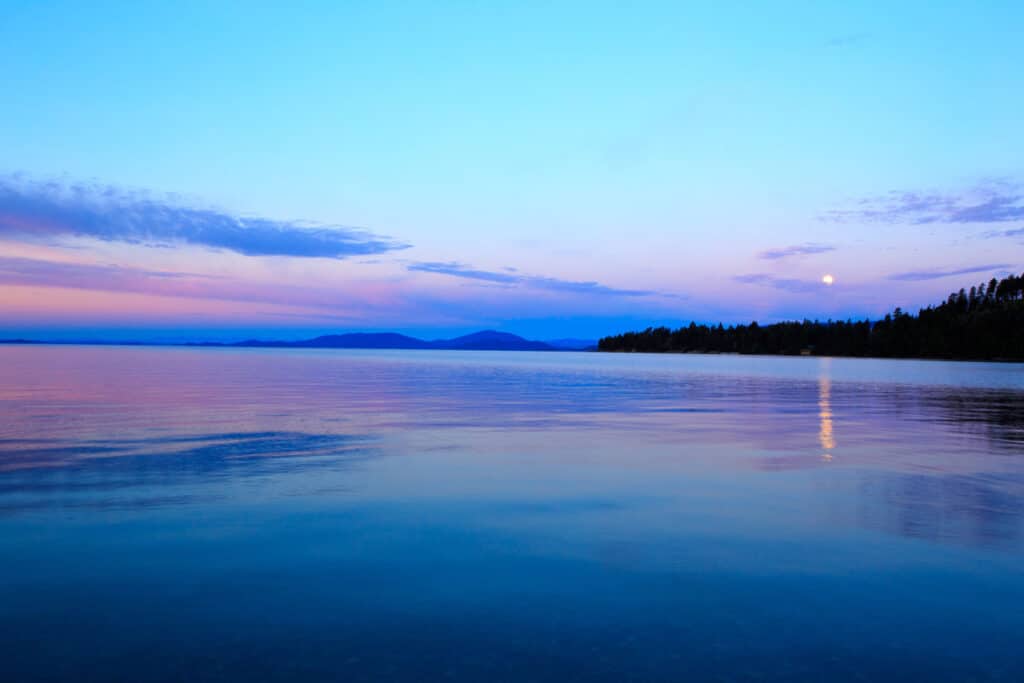
Measured by surface area, Flathead Lake is the biggest and cleanest lake in Montana.
©iStock.com/highmountainphotography
Flathead Lake is the biggest and cleanest lake in Montana, measured by surface area. Yellow perch, trout, whitefish, sturgeon, and northern pike can all be found in this body of water. Fishing, swimming, sailing, waterskiing, powerboating, and other activities are available at nearby tree-lined beaches. The lake’s clarity is due to the lack of nutrients in the water, which suppresses algae development.
The lake’s name does not relate to its appearance or the fish species living in its waters. It was constructed by glacial damming of the Flathead River, which feeds the lake below Kalispell, and is named after the Flathead (Salish) Indians. The Kerr Dam, which was finished in 1958, near Polson on the south end of the lake provides power and irrigation. The lake is famous for its rare large eel species that is said to be 20 to 40 feet in length.
3. Lake Winnipesaukee

Winnipesaukee means “smile of the Great Spirit.”
©iStock.com/Gerry Fagan
Lake Winnipesaukee is the biggest lake in New Hampshire, United States, and is nestled in the Lakes Region near the slopes of the White Mountains. The lake got its name through a Native American legend. According to the legend, ‘ogee’ meant ‘Great Spirit,’ ‘winni’ meant ‘smile’ or ‘smiling,’ and ‘auke’ meant ‘high position.’ Thus, Winnipesaukee (sometimes written Winnipiseogee in previous centuries) is an Abenaki word that means “smile of the Great Spirit” or “beautiful water in a high place.”
The lake has an estimated 264 islands, which are less than a quarter-acre in surface area, and is curved by various peninsulas, totaling around 288 miles (463 km) of shoreline. It takes 63 miles (101 km) to drive around the lake, and it sits at 504 feet (154 meters) above sea level. After Lake Champlain and Moosehead Lake, Winnipesaukee is the third largest lake in New England.
4. Lake Chaubunagungamaug
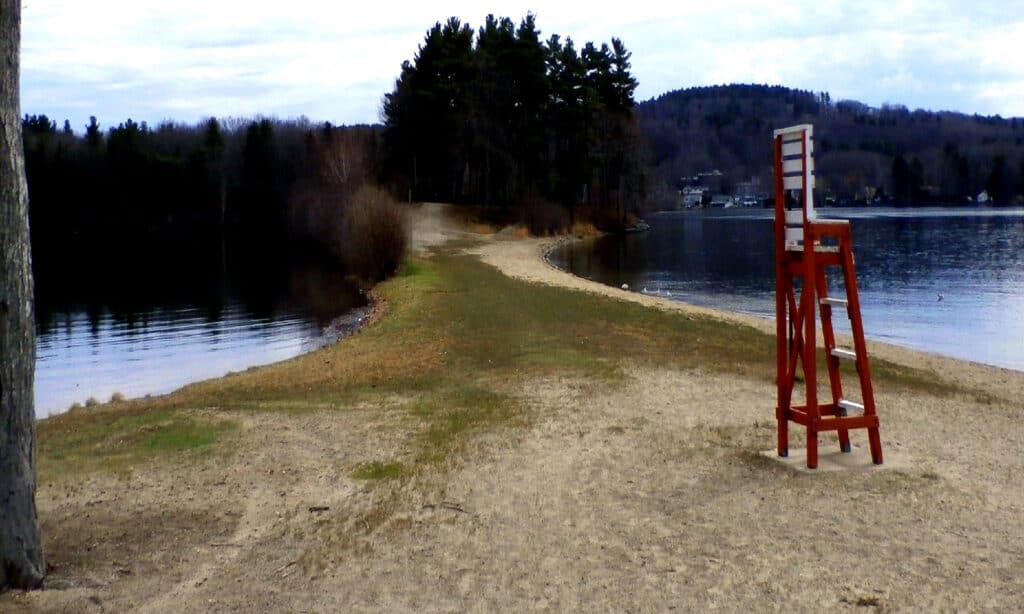
Lake Chargoggagoggmanchauggagoggchaubunagungamaugg is located in Webster, Massachusetts.
©iStock.com/DonnaLee-B
Lake Chaubunagungamaug is a lake in Webster, Massachusetts. It has a total area of 1,442 acres and is close to the Connecticut state line. The best thing is that the lake’s actual name is much more difficult to say. Lake Chaubunagungamaug has been known by a longer name since 1921, with 45 letters and fourteen syllables: Lake Chargoggagoggmanchauggagoggchaubunagungamaugg. Beyond Central Massachusetts, the lake is recognized for having the United States’ longest and strangest name of any geographic object.
Lake Chargoggagoggmanchauggagoggchaubunagungamaugg has 15 letter Gs, which is even more than its average depth of 13 feet, making it the world’s third-longest single-word place name and the first in the United States. The lake was named “Chaubunagungamaug,” which translates to “fishing place at the boundary.” It was later called “Chargoggagoggmanchauggagoggchaubunagungamaugg,” which means “English knifemen and Nipmuck Indians at the boundary or neutral fishing place.”
5. Lake Winnibigoshish
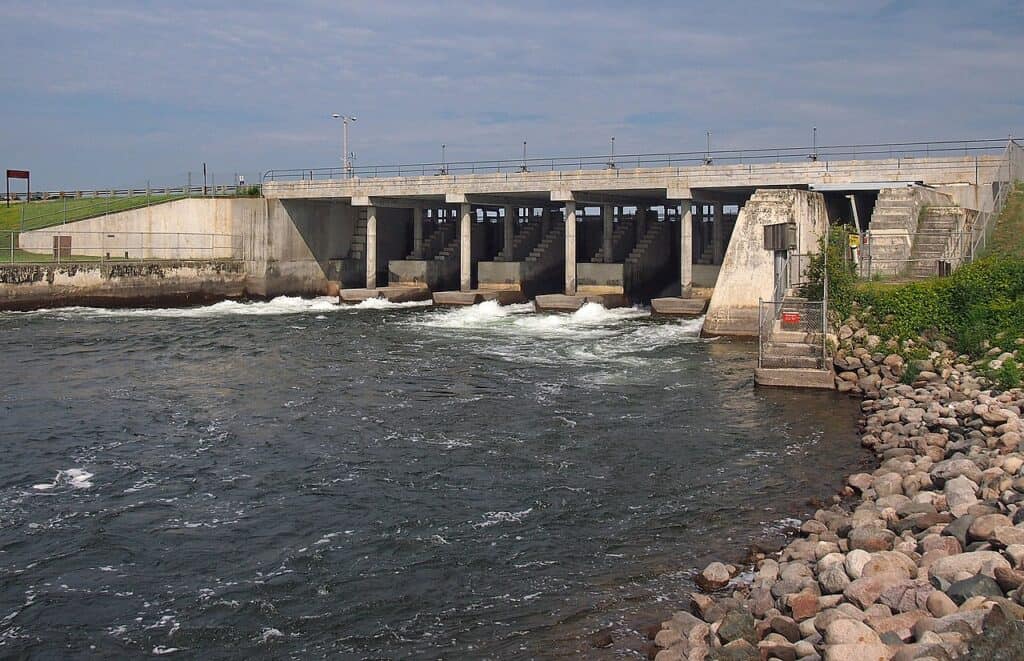
Covering approximately 67,000 acres, Lake Winnibigoshish is Minnesota’s seventh-largest lake.
©McGhiever / Creative Commons – License
Lake Winnibigoshish is a lake in north-central Minnesota’s Chippewa National Forest. In the Ojibwe language, Wiinibiigoonzhish, a derogatory variation of Wiinibiig, means “filthy water.” Lake Winnibigoshish, sometimes known as Big Winnie, is Minnesota’s seventh-largest lake, covering approximately 67,000 acres. Lake Winnie averages 15 feet in depth and reaches a maximum of 78 feet. It is surrounded by 141 miles of beautiful, unspoiled beachfront, which is made up of pine and hardwood trees and gently sloping hillsides.
Under the lake’s vast blue surface, game fish abound while fauna thrives on the lake’s margins. To mention a few, foxes, deers, ducks, and bears live in the Chippewa National Forest’s woodland ecosystem surrounding Lake Winnie.
6. Elephant Butte Lake
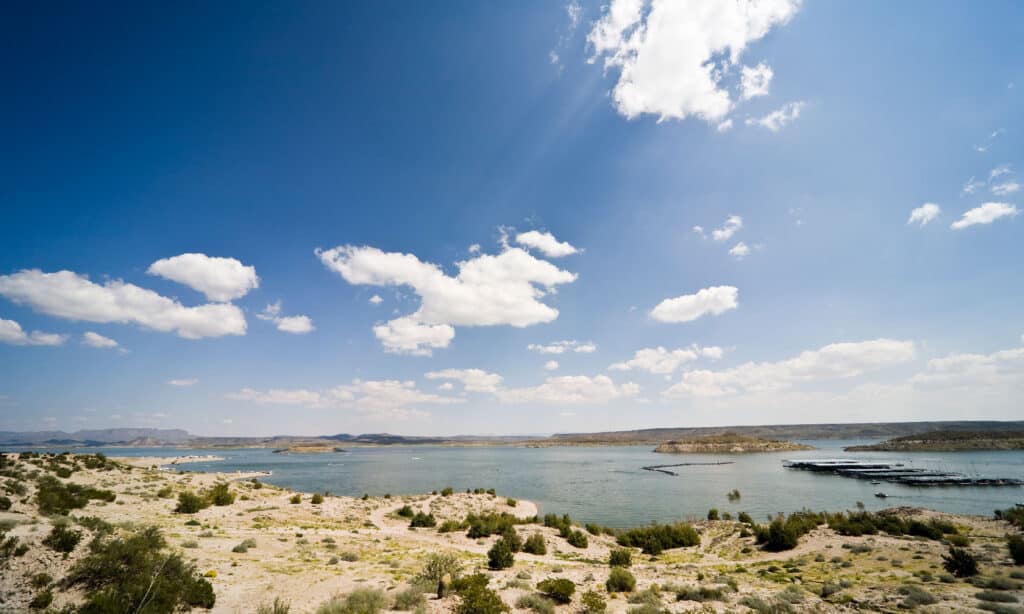
“Elephant Butte” comes from the weathered heart of a former volcano.
©iStock.com/pmphoto
The Elephant Butte Lake, perhaps one of the strangest and funniest names on this list, may make anyone chuckle the first time they hear it, but its meaning is not what you might imagine. The term Elephant Butte” comes from the weathered heart of a former volcano, which is now an elephant-shaped islet in the reservoir. Ironically, while stegomastodon fossils were discovered near the reservoir, the zone was not named after them.
Elephant Butte Lake State Park is located in the Elephant Butte in Sierra County, New Mexico. It sits 7 miles (11 kilometers) north of Elephant Butte Reservoir and encloses New Mexico’s largest reservoir. Elephant Butte is also the state’s largest state park.
7. Hanging Lake

Hanging Lake sits around 7 miles east of Glenwood Springs.
©iStock.com/Donyanedomam
Located in Colorado, Hanging Lake is a popular tourist site in Glenwood Canyon, sitting about 7 miles (11 km) east of Glenwood Springs. The trail goes down Dead Horse Creek, a contributor to the Colorado River, approximately 1.6 miles (2.6 km) from the entrance to the lake, and ascending 1,000 feet (300 m) in height. But why is the lake named Hanging Lake? A geologic fault caused the lake bed to drift away from the valley floor above, making it a “hanging lake.”
Early accounts of the lake’s discovery describe a man seeking gold in the canyon. At the mouth of a gulch, the man discovered a dead horse. He proceeded around the opposite side of the lake by following the gulch up the steep mountain. The first thing he noticed, according to historical tales, was the small bowl-like basin clinging to the rocks below from this vantage point.
8. Prettyboy Reservoir
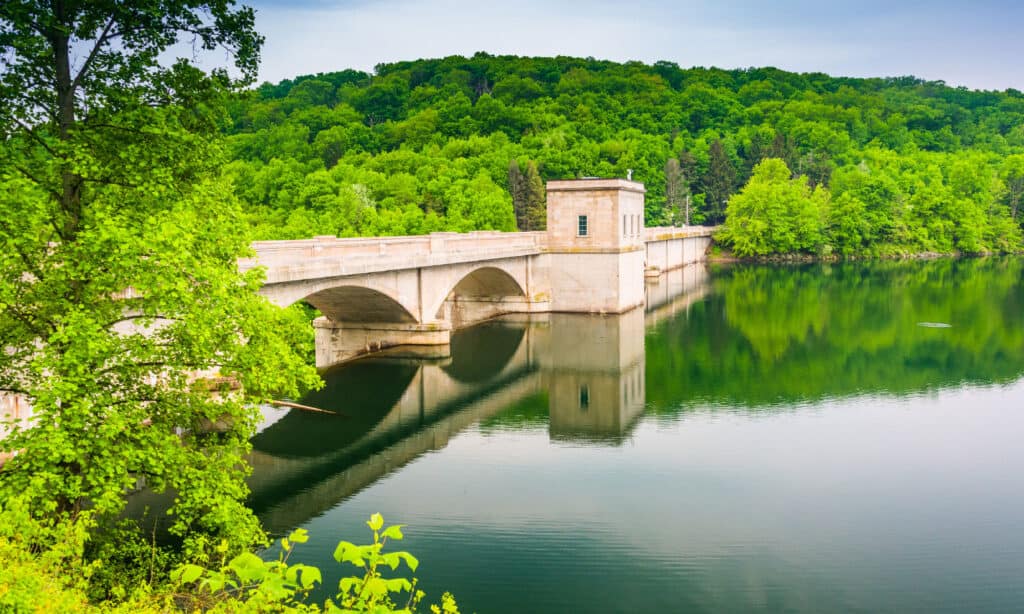
Containing about 19 billion gallons of water, Prettyboy Reservoir provides water to millions of residents.
©iStock.com/AppalachianViews
Prettyboy Reservoir is a lake that feeds Baltimore’s water supply. It contains 19 billion gallons of water, providing water to over 2 million residents in four Maryland counties. The lake’s name also has quite an interesting tale. Legend says that a colt owner had visited the creek several times and cried out his prized steed’s name. The lake was named after the lost colt, “Prettyboy,” and was renamed Prettyboy Creek after Baltimore City flooded the region to create a reservoir. Also known as Hereford Zone, Prettyboy Reservoir is a 79.7 square mile (206.5 square kilometers) reservoir in northern Baltimore County, Maryland. Although the reservoir is situated within the county, Baltimore controls the lake and its surrounding watershed.
9. Lake Okeechobee
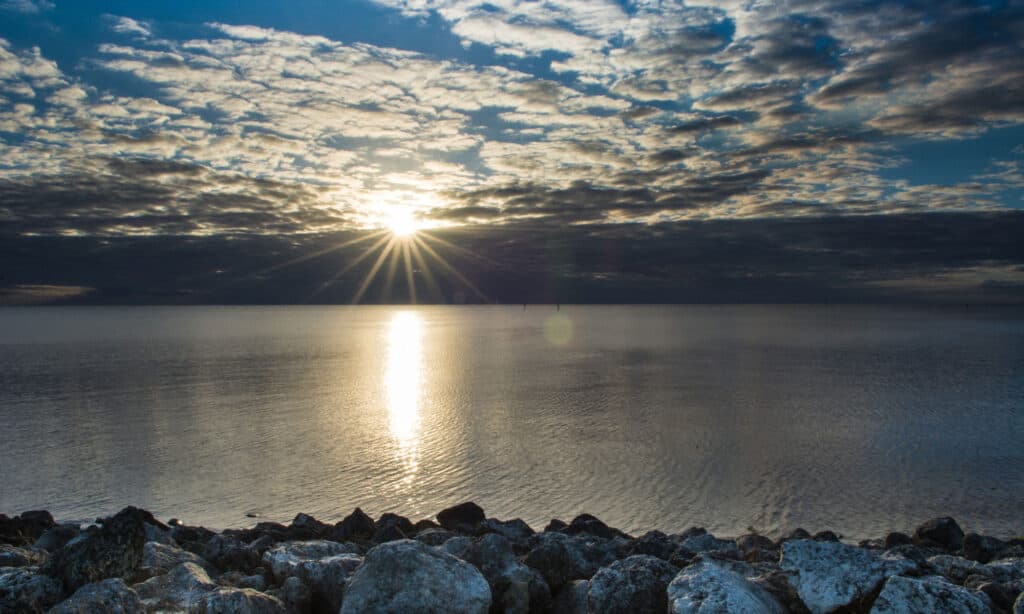
Lake Okeechobee is one of the biggest natural freshwater lakes in the United States.
©Allison Michael/Shutterstock.com
Apart from being the 8th biggest natural freshwater lake in the United States, Lake Okeechobee, often called Florida’s Inland Sea, is also the largest freshwater lake in Florida. Lake Okeechobee is also considered the second-largest freshwater lake that is wholly within the confines of 48 states. The Calusa were the first people known to have resided near the lake. According to Hernando de Escalante Fontaneda, who lived by the lake in the 16th century, the Calusa people named the lake Mayaimi, which means “big water.” Okeechobee is derived from the Hitchiti words “oki,” which means water, and “chubi,” meaning big.
At the northern shore of the Everglades, the lake lies roughly 40 miles (65 kilometers) northwest of West Palm Beach. It measures around 35 miles (55 kilometers) long, has a shoreline of 135 miles (220 kilometers), and encompasses an area of about 730 square miles (1,900 square km), including a few tiny islands.
10. Lake Wallula
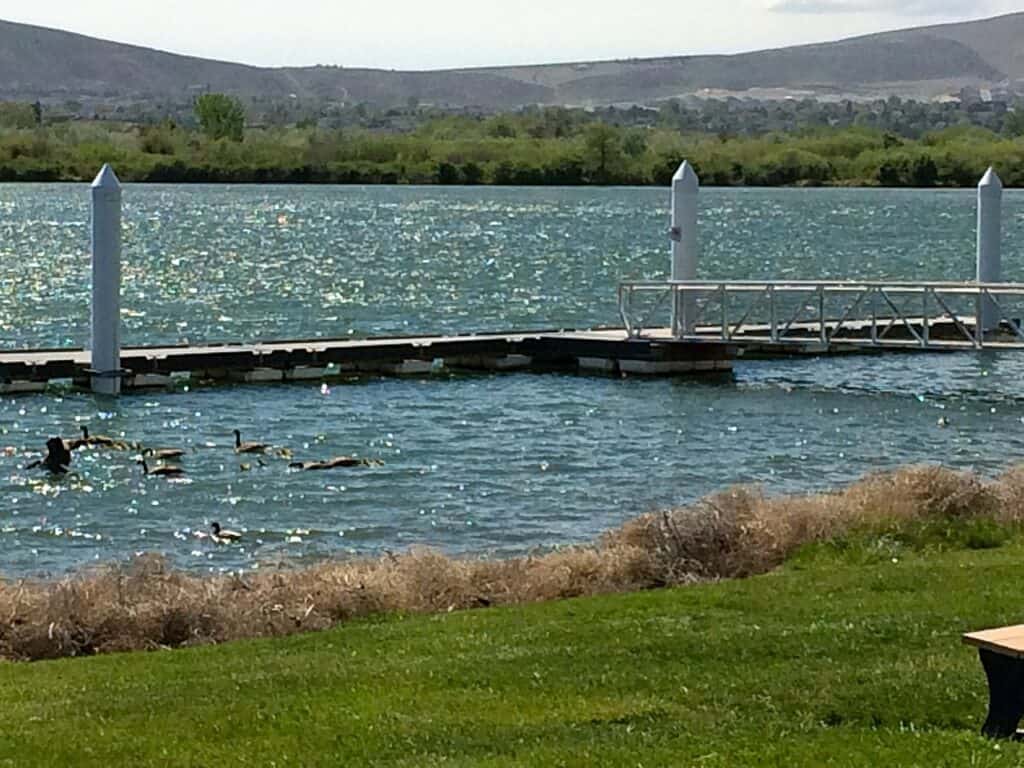
Lake Wallula was constructed alongside McNary Dam when it was built in 1954.
©Gregory Varnum / Creative Commons – License
Lake Wallula is a water recreation and leisure destination on the Columbia River in northeastern Oregon and southeastern Washington. When McNary Dam was built in 1954, the reservoir was constructed alongside it.
Around Lake Wallula, the topography is varied. Port districts have authority over about 1,500 acres of land inside the industrial development limit. Commercial companies or boat clubs provide facilities at eight distinct locations. The lake’s public properties are used for water-related industrial development, recreation, wildlife habitat, and mitigation.
Summary of the 10 Funniest and Most Bizarre Lake Names in the U.S.
Here’s a recap of the 10 U.S. lake names that we found funny and strange.
| Number | Lake Name |
|---|---|
| 1 | Lake Erie |
| 2 | Flathead Lake |
| 3 | Lake Winnipesaukee |
| 4 | Lake Chaubunagungamaug |
| 5 | Lake Winnibigoshish |
| 6 | Elephant Butte Lake |
| 7 | Hanging Lake |
| 8 | Prettyboy Reservoir |
| 9 | Lake Okeechobee |
| 10 | Lake Wallula |
The photo featured at the top of this post is © iStock.com/Gerry Fagan
Thank you for reading! Have some feedback for us? Contact the AZ Animals editorial team.






